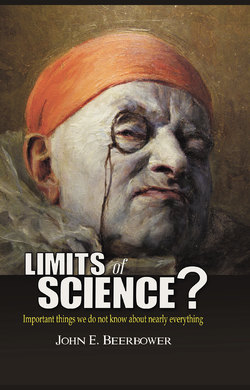Читать книгу Limits of Science? - John E. Beerbower - Страница 7
На сайте Литреса книга снята с продажи.
Comprehensibility
ОглавлениеTo return to the subject of comprehensibility or understanding, an important component of comprehension to modern man is the existence of some theory or model that generates an explanation of the causal relationship, i.e., why it is that “if A, then B.” A theory will postulate what things are causally related and why (or how). An attractive theory will generally accomplish two things: it will be consistent with a body of observations or data and it will provide the person contemplating it with a sense of explanation, a feeling of insight or understanding, not held before the theory was propounded. This second achievement can be described as an experience akin to putting on a pair of properly prescribed spectacles—one can see things more clearly or, even, see things that one previously could not.5
As we shall see, the role of the concept of understanding (or explanation) in science is subject to some dispute. Various philosophers of science and many working scientists have argued that the accuracy of the predictions that can be made is the real scientific test of a theory. Nonetheless, there has been a persistent feeling among many others that the essence or heart of science involves something more.
Michael Polanyi, in an influential paper from 1966, stressed the central importance of what he called “vision,” both in the process of discovery and in the subsequent acceptance of new theories. “The vision which guided the scientist to success lives on in his discovery and is shared by those who recognize it. It is reflected in the confidence they place in the reality of that which has been discovered and in the way in which they sense the depth and fruitfulness of a discovery. Any student of science will understand—must understand—what I mean by these words. But their teachers in philosophy are likely to raise their eyebrows at such a vague emotional description of scientific discovery.” “The Creative Imagination,” in Michael Kransz (ed.), The Idea of Creativity (2009), pp.147–8 (reprinted from Chemical Engineering News 44 (1966) p.85).
Polanyi explained that Copernicus had a vision, subsequently shared by Kepler and Galileo and others, that persisted despite the practical problems of connecting the new theory to the substantial data that had been compiled, problems that required Kepler, Galileo and then Newton to resolve. He asserts that they did not believe in the new theory because the theory solved the problems necessary to predict accurately the planetary movements. Instead, the scientists managed to solve the problems because they already believed the theory. Polanyi also asserts that this vision is the scientists’ glimpse of reality: they “believe that it refers to no chance configuration of things, but to a persistent connection of certain features, a connection which, being real, will yet manifest itself in numberless ways, inexhaustibly. It is to believe that it is there, existing independently of us, and that for that reason its consequences can never be fully predicted.” Id., p.149.
In short, one could manage the external world based upon theories or models that accurately predicted the consequences of particular actions or events. But, many of us would not necessarily say that that person really comprehended or understood the world. We want more than accurate predictions; we want understanding.
In all events, the source of man’s creative actions lies in the construction of theories, which start initially with speculation and the formulation of hypotheticals that are then “tested” against observations of phenomena in the external world. The remarkable history of the development of human culture and learning reflects the power of the theory-building mind to test, improve, reject and then create ever-more extensive theories to explain the human situation and the external world.
